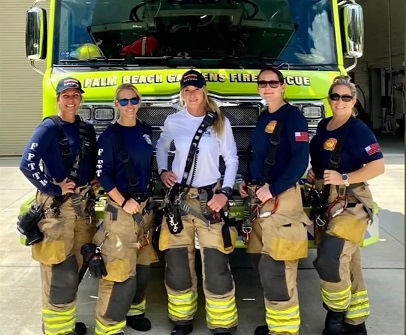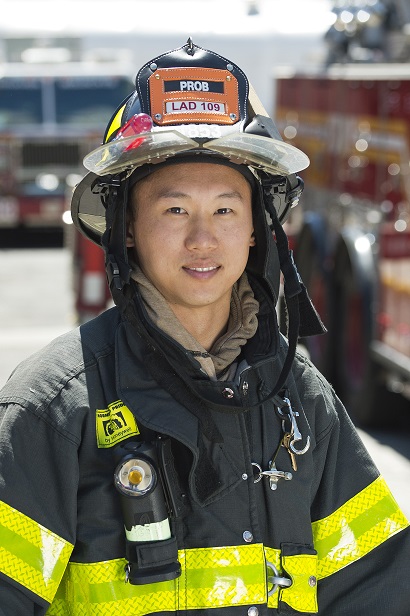Compiled By: Robert Avsec, Executive Fire Officer
John S. Butler, currently the fire chief for the Fairfax County (Va.) Fire and Rescue Department, was the newly promoted fire chief for the Howard County (Md.) Department of Fire/Rescue Services in 2015 when he set a goal for increasing the diversity of his fire/rescue department. In setting that goal, Chief Butler challenged his staff to begin pursuit of that goal by answering “Why is it important to have a diverse and inclusive department?” before determining what recruitment and selection actions to pursue.
In 2016, Howard County Fire/Rescue Services welcomed the most diverse class of entry-level firefighter/paramedic trainees in its history. Of the 36 applicants selected for the 26-week Emergency Medical Services and Fire training academy, 20 were women or other culturally diverse trainees, and eight were bilingual, speaking Chinese, French, Korean, Russian and Spanish (Language skills that are particularly useful in Howard County with a very diverse population of 328,200 as reported in the 2020 census. Geographically, Howard County is part of the Baltimore-Columbia-Towson, MD Metropolitan Statistical Area).
Read more from Chief Butler in this piece, Answer ‘Why diversity is important’ to improve firefighter recruitment.
DIVERSITY, EQUITY, AND INCLUSION
First, let’s align your expectations with what you’re about to read.
Diversity – The presence of different and multiple characteristics that make up individual and collective identities, including race, gender, age, religion, sexual orientation, ethnicity, national origin, socioeconomic status, language, and physical ability.
Equity – The process of identifying and removing the barriers that create disparities in the access to resources and means, and the achievement of fair treatment and equal opportunities to thrive. See also equality.
Inclusion – Is creating environments in which any individual or group can be and feel welcomed, respected, supported, and valued to participate fully.
A couple of other key terms that I believe are critical to understand when tackling diversity and inclusion challenges are:
The dominant group in most fire departments comprised of white males and it’s that dominant group has written the rules, the regulations, and the procedures. And they’ve created all the cultural elements that goes along with those formal documents (e.g., patches, slogans, work practices, and yes, even hazing). All of which—as with any organization—serve as controls to ensure that the dominant group remains the dominant group.
The non-dominant group is composed of everyone else (e.g., women, minorities, different nationalities) that are not white males.
Many fire departments have focused their recruiting efforts on diversity–getting more applicants who are members of the non-dominant group.
Read Next: Why aren’t fire departments getting better at inclusion?
Below are seven articles that I believe provide a good look at how to improve diversity and inclusion in fire departments from several different perspectives from several different authors.
5 principles to include in your hiring process to set your fire department apart
The policies presented to potential candidates define your philosophy and values with respect to diversity and hiring decisions.
Retooling the fire service hiring process to achieve diversity among the ranks
The key to change may be the unique combination of recruitment practices, a validated placement exam, and a process of random selection.
7 steps to an inclusive fire department culture
Promoting recruitment and retention for diversity throughout the firefighter career lifecycle helps departments achieve success today and tomorrow.
What it means to really commit to a diverse and inclusive fire department
Consistency and persistence of inclusive values will help the fire service leaders move beyond hollow proclamations of diversity.
Igniting a change: Recruiting and retaining female firefighters in a male-dominated occupation
If departments want to promote diversity in the fire service, they have to do more to remove the barriers preventing women and people of color from becoming firefighters. This is also the aim of Dr. Kamau Bobb and many experts in STEM education and workforce diversity.
Roundtable: How to improve fire department diversity
Fire service leaders explain why inclusivity creates a stronger department and counter a common area of contention in advocating for diversity.
The diversity paradox: A true commitment to change needed in the fire service
A commitment to diversity and inclusion must be practiced and reaffirmed constantly in both behavior and underlying culture.
Read More
Clan Behavior and its Influence on Fire Service Culture
E-Books on Diversity and Inclusion, Leadership, Recruitment and Retention and more.
 Fire & EMS Leader Pro The job of old firefighters is to teach young firefighters how to become old firefighters!
Fire & EMS Leader Pro The job of old firefighters is to teach young firefighters how to become old firefighters!

